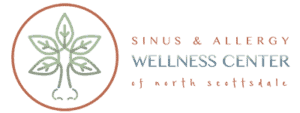Sinusitis Statistics 2020-2019 – Sinusitis Facts and Data Trends

Home > Blog > Sinusitis Statistics 2020-2019 – Sinusitis Facts and Data Trends
Sinusitis Statistics 2020-2019 – Sinusitis Facts and Data Trends
Sinusitis Statistics 2020-2019
 Sinusitis impacts approximately 30 million adults annually in the United States alone. It causes billions of dollars in economic impact and millions of days in lost time from work. Because of this, sinusitis receives a broad research focus. We now understand how to treat sinusitis and how it impacts patients, their families, employers, and friends, and the best methods for reducing the symptoms and financial impact of sinusitis and treatments like Balloon Sinuplasty. Below is a list of significant statistics regarding sinusitis with a discussion of the importance of each statistic.
Sinusitis impacts approximately 30 million adults annually in the United States alone. It causes billions of dollars in economic impact and millions of days in lost time from work. Because of this, sinusitis receives a broad research focus. We now understand how to treat sinusitis and how it impacts patients, their families, employers, and friends, and the best methods for reducing the symptoms and financial impact of sinusitis and treatments like Balloon Sinuplasty. Below is a list of significant statistics regarding sinusitis with a discussion of the importance of each statistic.
- Sinusitis complicates .5% of upper respiratory tract infections.
- Doctors diagnose 11.6% of American adults with sinusitis.
- Every year, sinusitis causes approximately 73 million restricted activity days.
- Sinusitis’s socioeconomic impact exceeds $5.8 billion.
- 47% of cases improve within one week without antibiotics.
- In 2000, sinusitis caused over 1.3 million hospital visits.
- Nasal saline promotes quicker healing from sinusitis.
- Abnormal CT scans appear in 84-100% of patients with severe asthma.
- Antibiotics for chronic rhinosinusitis cost more than $150 million annually.
Studies show that sinusitis complicates .5% of upper respiratory infections. While not every upper respiratory infection results in sinusitis, the possibility remains. Acute sinusitis impacts as many as 40 in 1000 patients per year, depending on the area and the time of year. Many of the organisms causing sinusitis can cause other conditions. No tests or imaging definitively diagnose sinusitis. Therefore, doctors must determine the diagnosis clinically based on the physician’s observations and patient complaints.
At some point in their lives, 11.6% of adults in the United States will receive a sinusitis diagnosis. Sinusitis impacts approximately 30 million adults in the United States every year. Given the broad reach of sinusitis cases, practitioners should consider the diagnosis when an adult presents with what appears to be the common cold or other upper respiratory infection, especially given that sinusitis does occur in many upper respiratory infection cases.
Sinusitis causes significant reductions in work attendance and other measures of activity. One study found that sinusitis caused Americans 73 million restricted activity days. Sinusitis, not adequately treated, keeps patients from engaging in work, shopping, exercise, and other similar activities, producing a negative impact on the economy and burdening the patient’s coworkers, family, and friends. Learning to control sinusitis, even with over-the-counter medications, could reduce the restricted activity days.
Additionally, it can lead to visits to doctor’s offices, purchases of prescription and over-the-counter drugs, and occasional CT or radiographic imaging. Many people undergo surgeries every year in an attempt to reduce the impact of sinusitis on their lives. The financial implications of sinusitis exceed $5.8 billion per year. Finding ways to combat sinusitis produces a positive effect on the economy by reducing the impact on the workplace. Fewer lost days results in increased productivity and lower economic impact. If patients learn to combat sinusitis without medical visits, costs for doctor’s appointments and prescription drugs will also fall, reducing the overall financial impact.
47% of all cases improve within one week without antibiotics. Additionally, 70% of cases resolve within two weeks without the administration of antibiotics. Therefore, the administration of antibiotics should wait until the second week of illness to determine whether or not the patient’s symptoms improve before deciding whether to prescribe antibiotics. Other initial treatments, such as decongestants or the administration of nasal saline, should receive more emphasis in the early days of a sinusitis case. Given the cure rate without antibiotics, patients with sinusitis may wish to wait until the second week before seeing a doctor to determine if their symptoms will improve on their own. Overuse of antibiotics, especially in patients with chronic sinusitis, could leave them susceptible to other infections in the future as their bodies adapt to the antibiotics.
In 2000, hospitals reported over 1.3 million hospital visits due to sinusitis. These hospital visits translated to approximately 1.5% of all hospital visits that year. Sinusitis usually does not require hospitalization. A visit to a family physician or an urgent care clinic typically suffices. Sinusitis does not require lab tests or imaging unless needed to rule out other conditions. Therefore, the visit to the hospital usually will not result in an increased chance of cure. It also further burdens hospitals charged with treating more severe conditions. The rate of sinusitis hospital visits likely indicates the overuse of hospital resources, even though in some rare cases, patients appropriately seek hospital treatment.
Nasal saline produced a 0.3 day decrease in the time needed for symptoms to resolve. Studies also associated nasal saline with fewer days out of work. The authors determined that nasal saline provides a small but tangible benefit. Given the lack of side effects from nasal saline administration, any initial attempts to reduce the impact of sinusitis should include its use. Nasal saline also represents a low cost, non-prescription treatment for sinusitis accessible to all patients. Administration of nasal saline by either spray, drop, or irrigation should produce the desired result.
Patients with severe asthma produce abnormal CT scans at a rate of 84-100%. Studies show that sinusitis can produce a more severe asthma response, so control of sinusitis can improve asthma conditions. Given the high correlation between people with asthma, and the severity of the asthma response with sinusitis, difficult-to-control asthmatics should receive screening for sinusitis. A reduction in sinusitis symptoms could provide relief not found with other modalities. Physicians should consider both the medical and surgical treatment of sinusitis to assist in controlling asthma symptoms.
Health insurers and patients spend more than $150 million per year attempting to resolve sinusitis attacks. Patients occasionally need multiple rounds of antibiotics to address a single sinusitis attack, and over 250,000 patients per year undergo surgery to reduce sinusitis symptoms. Post-surgically, these patients receive prescriptions for antibiotics.
Given the high rates of treating sinusitis without prescription antibiotics, doctors and patients may wish to choose other treatment paths before administering antibiotics to avoid the substantial costs associated with the drugs.
Disclaimer:
The information provided in this article is for informational and educational purposes only and does not constitute medical advice. It is not intended to diagnose, treat, cure, or prevent any disease or medical condition. Always seek the guidance of your physician or other qualified healthcare provider with any questions you may have regarding a medical condition or treatment.
Results may vary: Treatment outcomes and health experiences may differ based on individual medical history, condition severity, and response to care.
Emergency Notice: If you are experiencing a medical emergency, call 911 or seek immediate medical attention.



